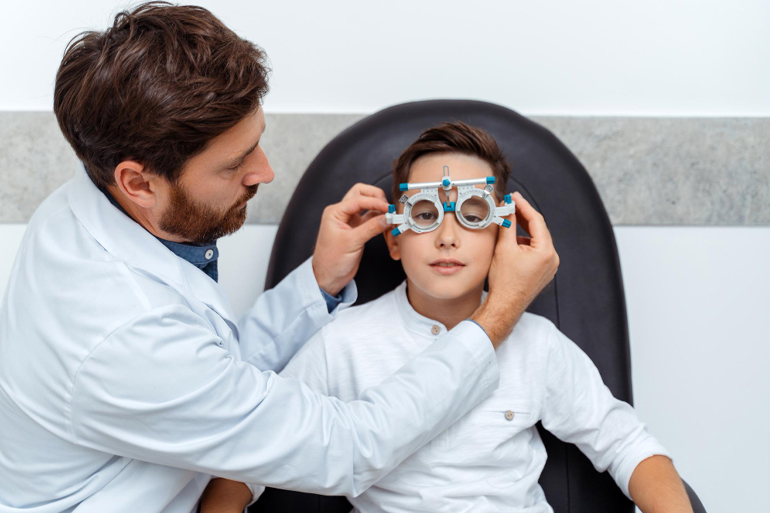Understanding Retinopathy: Causes, Symptoms, and Treatments

Retinopathy is a serious eye condition that can lead to vision loss if not properly managed. It is a common complication of diabetes but can also result from other underlying health issues. In this blog, we will explore what retinopathy is, its causes, symptoms, and the available treatment options. By understanding retinopathy, you can take proactive steps to protect your vision and overall eye health.
What is Retinopathy?
Retinopathy refers to damage to the retina, the light-sensitive tissue at the back of the eye that is crucial for vision. When the retina is damaged, it can affect your ability to see clearly and may lead to vision loss. There are different types of retinopathy, with diabetic retinopathy being the most well-known.
Causes of Retinopathy
Retinopathy can be caused by various factors, including:
1. Diabetes
Diabetic retinopathy is the most common form of retinopathy and occurs when high blood sugar levels cause damage to the blood vessels in the retina. Over time, these blood vessels can swell, leak, or become blocked, disrupting the normal flow of blood and leading to vision problems.
2. Hypertension
High blood pressure can also damage the blood vessels in the retina, leading to hypertensive retinopathy. This condition can cause changes in the retina’s blood vessels and affect vision.
3. Other Medical Conditions
Certain medical conditions, such as anemia, blood disorders, and autoimmune diseases, can also contribute to the development of retinopathy. These conditions can affect blood flow and the health of the retina.
4. Eye Injuries
Trauma or injury to the eye can damage the retina and lead to retinopathy. This can occur from physical impact, exposure to harmful substances, or other types of eye injuries.
Symptoms of Retinopathy
Retinopathy often develops gradually and may not cause noticeable symptoms in its early stages. As the condition progresses, you may experience the following symptoms:
1. Blurred Vision
One of the most common symptoms of retinopathy is blurred or distorted vision. You may notice that your vision becomes less sharp and clear, making it difficult to see details.
2. Floaters
Floaters are small, dark spots or lines that appear to float across your field of vision. They can be a sign of changes in the retina and may indicate retinopathy.
3. Dark or Empty Areas in Vision
As retinopathy progresses, you may develop dark or empty areas in your vision. This can affect your ability to see objects clearly and may interfere with daily activities.
4. Vision Loss
In advanced stages, retinopathy can lead to significant vision loss. This can occur gradually or suddenly, depending on the severity of the condition and the extent of damage to the retina.
Diagnosing Retinopathy
Early detection and diagnosis of retinopathy are crucial for effective treatment and preventing vision loss. An eye care professional can diagnose retinopathy through a comprehensive eye examination, which may include:
1. Dilated Eye Exam
During a dilated eye exam, the eye care professional will use special drops to widen your pupils. This allows them to examine the retina more thoroughly and check for signs of damage.
2. Optical Coherence Tomography (OCT)
OCT is a non-invasive imaging test that provides detailed images of the retina. It helps to identify any abnormalities or changes in the retinal tissue.
3. Fluorescein Angiography
Fluorescein angiography involves injecting a special dye into your bloodstream and taking photographs of the retina. This test helps to highlight any damaged or leaking blood vessels in the retina.
Treatment Options for Retinopathy
The treatment for retinopathy depends on the type and severity of the condition. Early detection and management are key to preventing further damage and preserving vision. Treatment options may include:
1. Blood Sugar and Blood Pressure Control
For diabetic and hypertensive retinopathy, controlling blood sugar and blood pressure levels is essential. This can be achieved through lifestyle changes, medication, and regular monitoring.
2. Laser Treatment
Laser treatment, also known as photocoagulation, is used to seal or shrink abnormal blood vessels in the retina. This helps to prevent further damage and reduce the risk of vision loss.
3. Intravitreal Injections
Intravitreal injections involve injecting medication directly into the eye to reduce inflammation, swelling, and abnormal blood vessel growth. These injections can help manage retinopathy and improve vision.
4. Vitrectomy
In severe cases of retinopathy, a surgical procedure called vitrectomy may be necessary. This involves removing the vitreous gel and any scar tissue from the eye to restore vision and prevent further complications.
Conclusion
Retinopathy is a serious eye condition that requires early detection and proper management to prevent vision loss. Understanding the causes, symptoms, and treatment options for retinopathy can help you take proactive steps to protect your eye health. If you experience any changes in your vision or have a medical condition that increases your risk of retinopathy, schedule a comprehensive eye exam with an eye care professional.